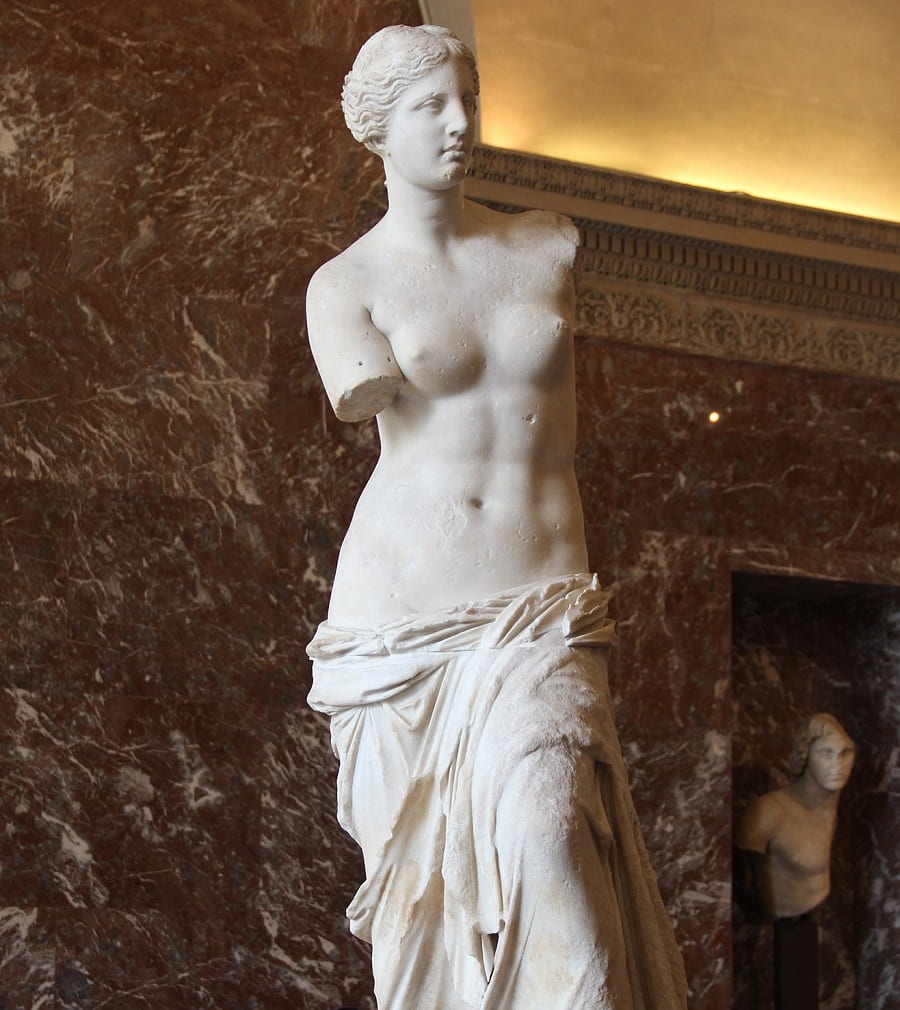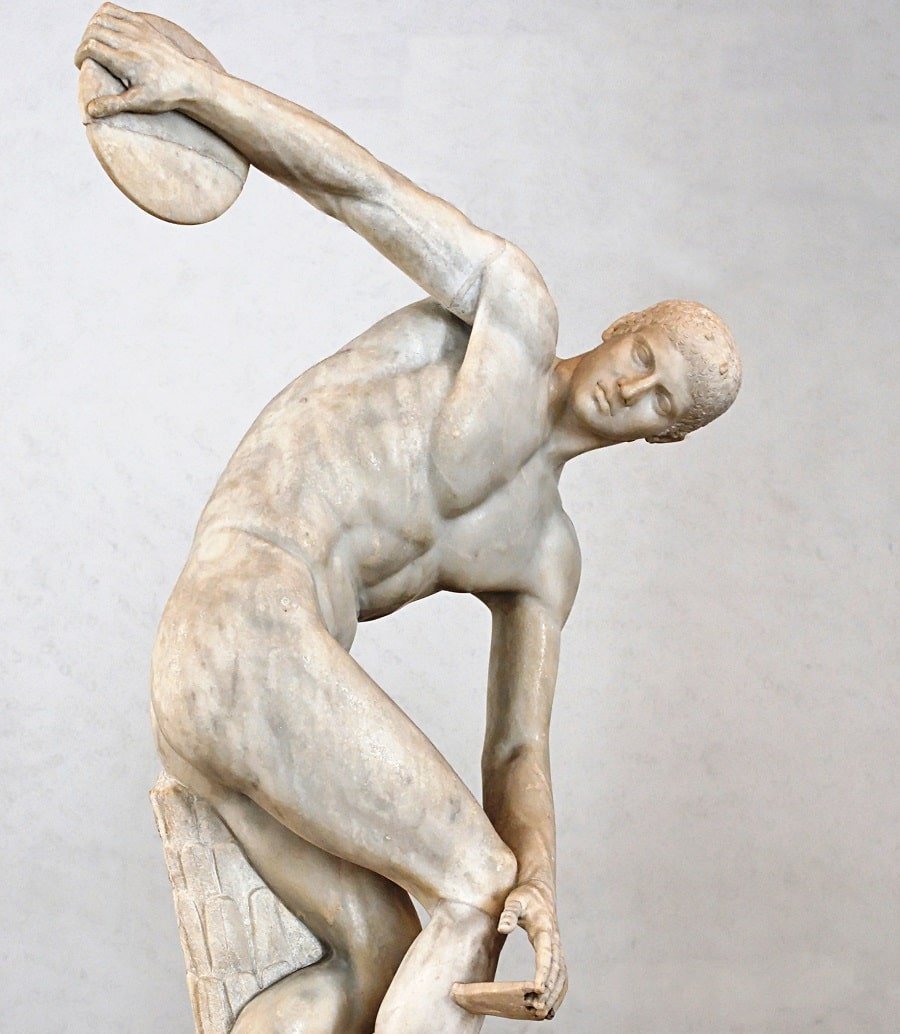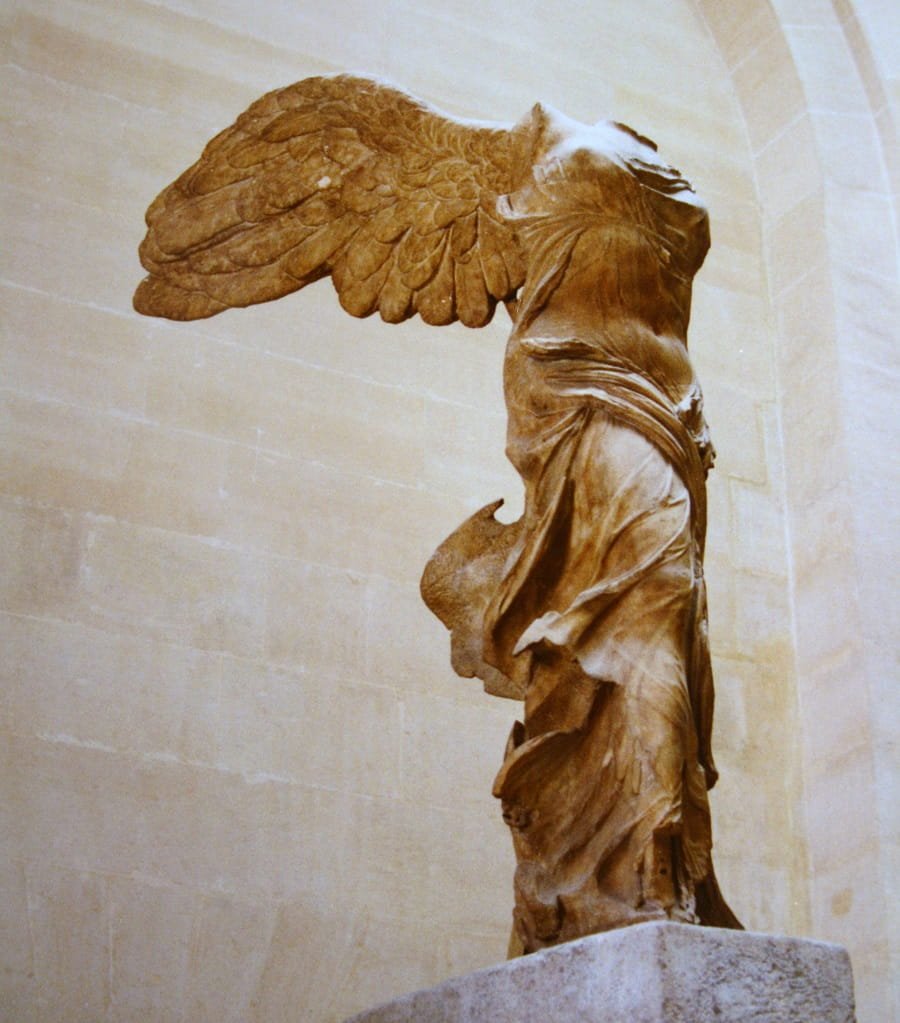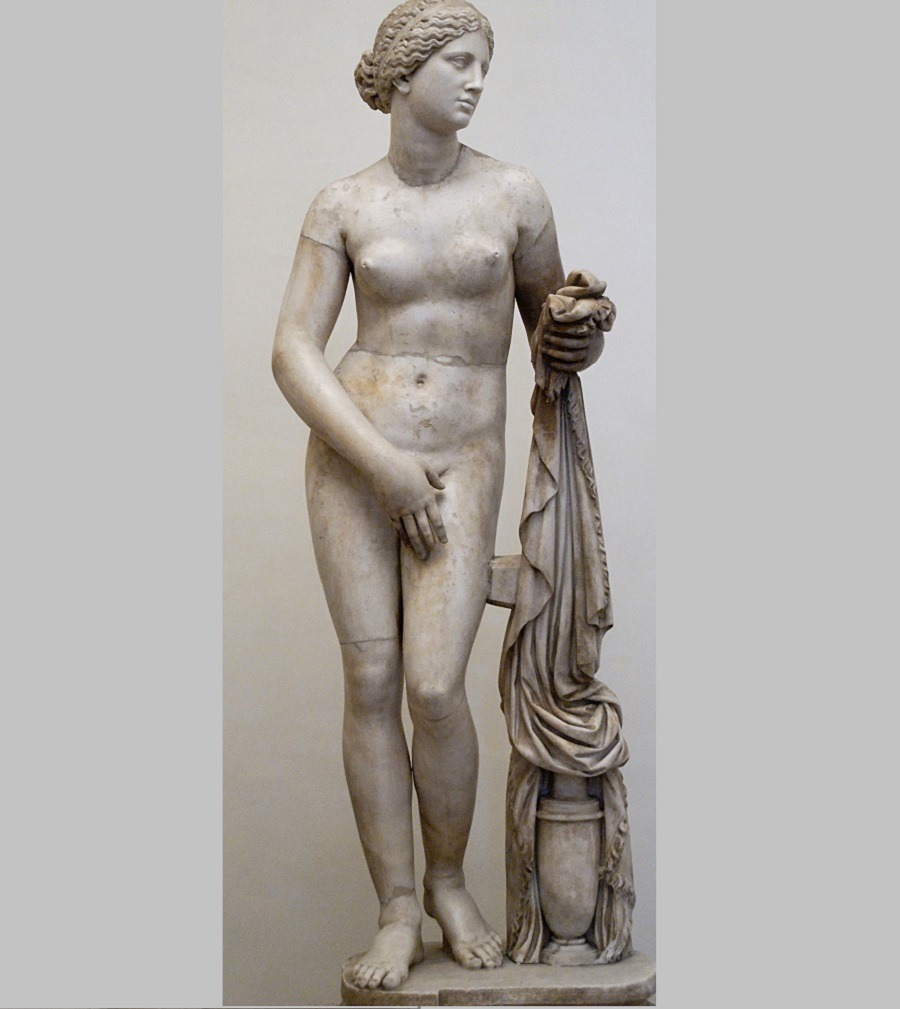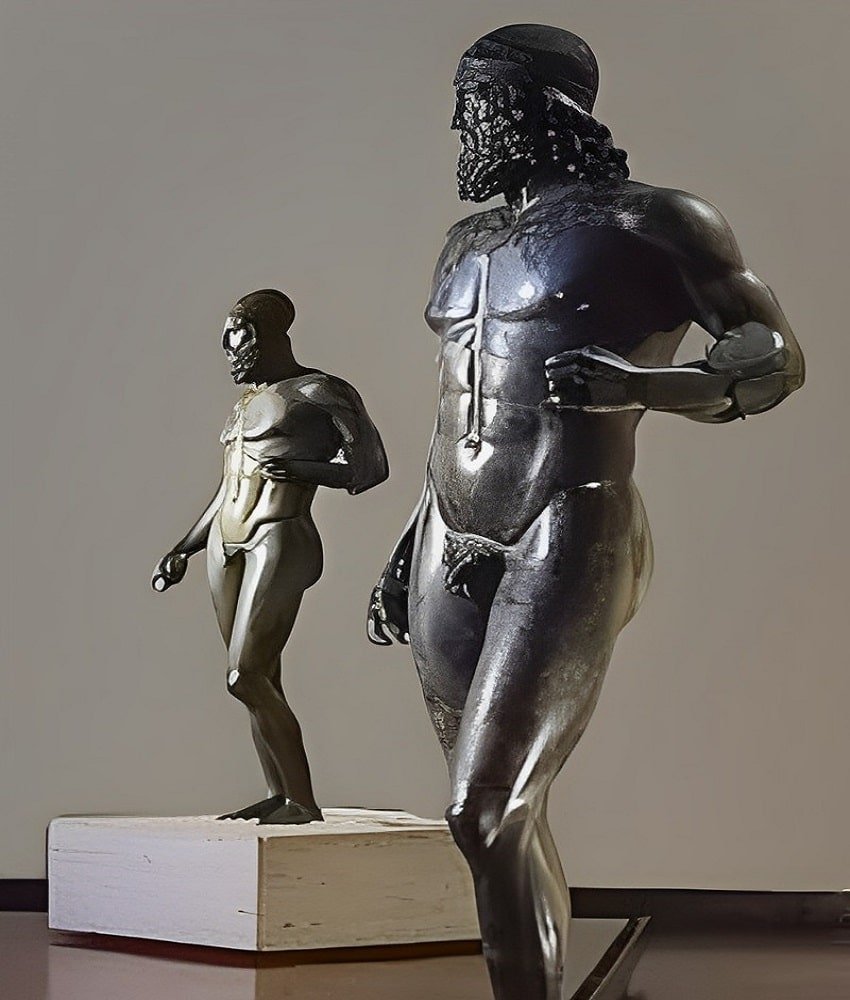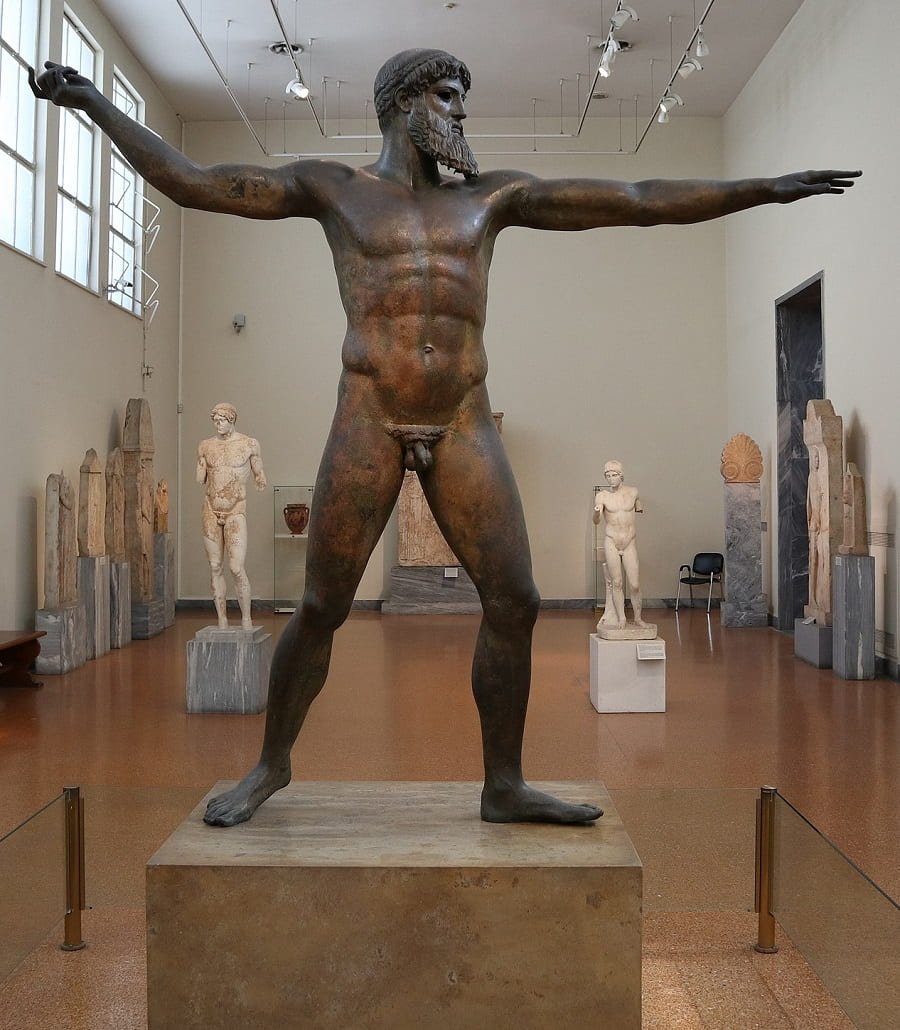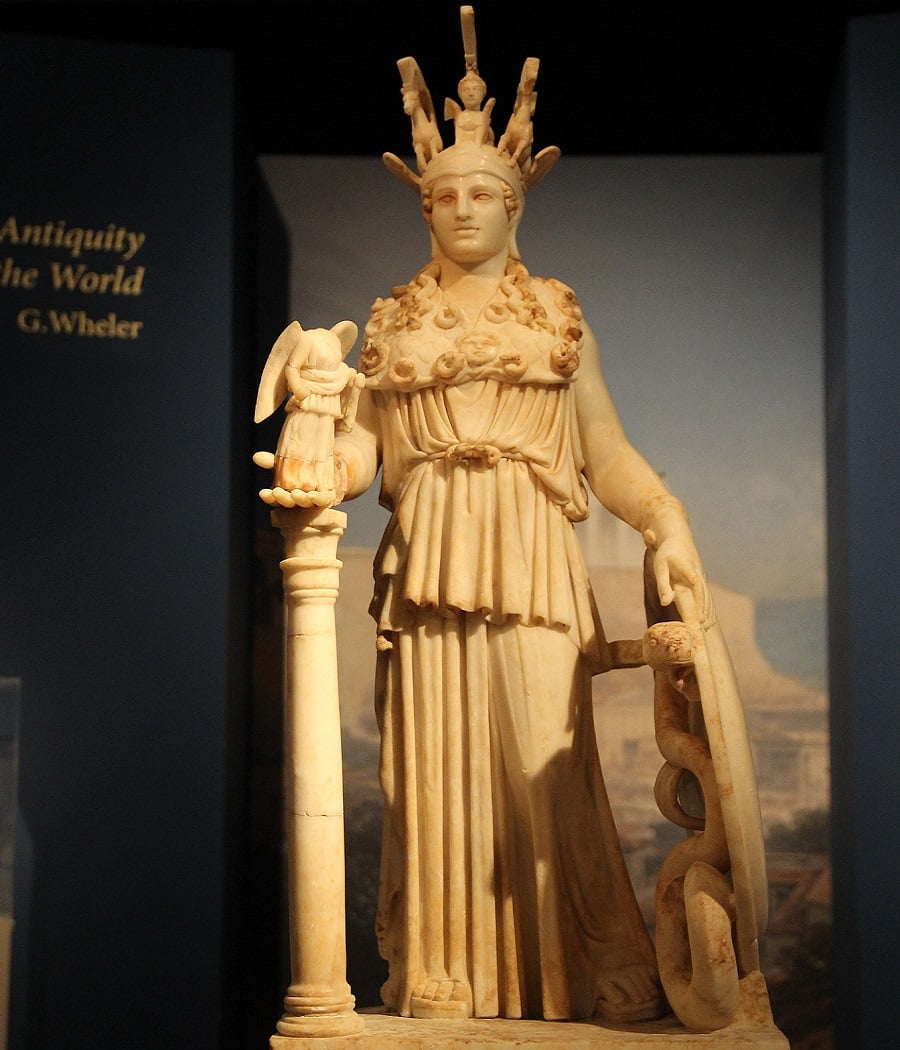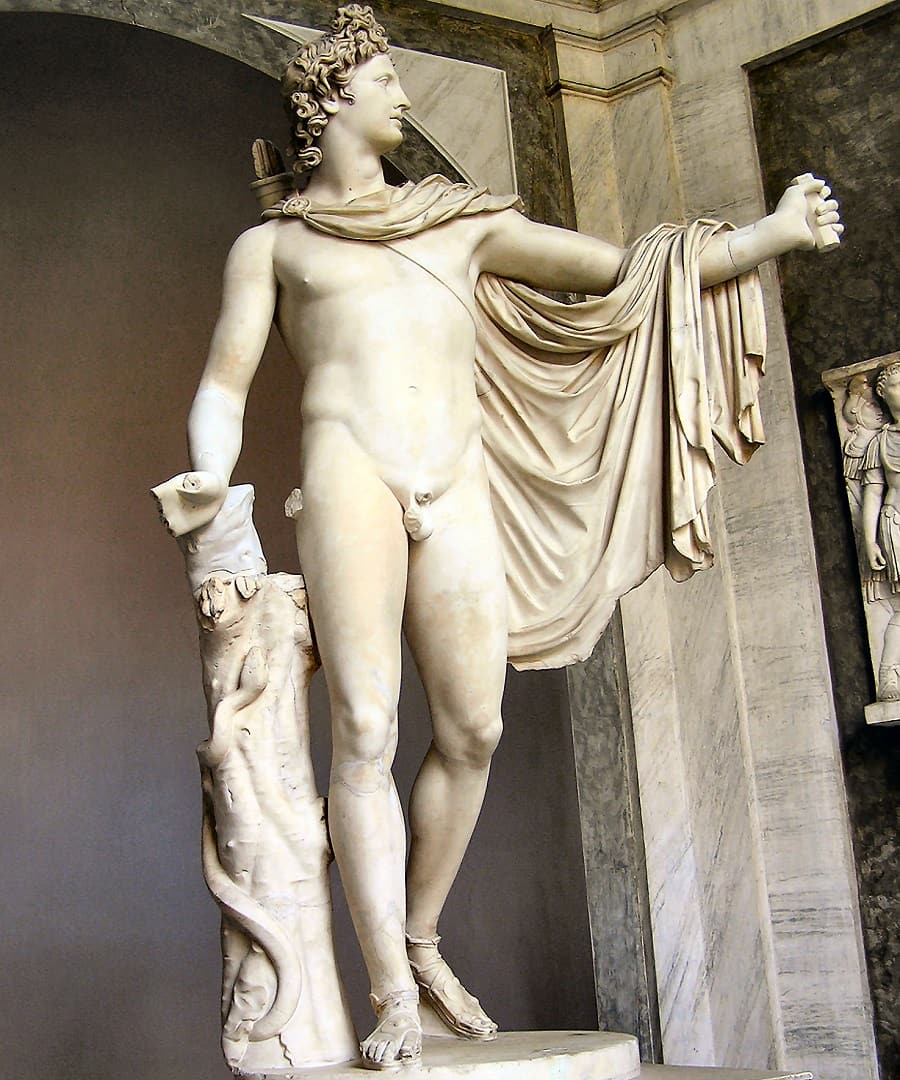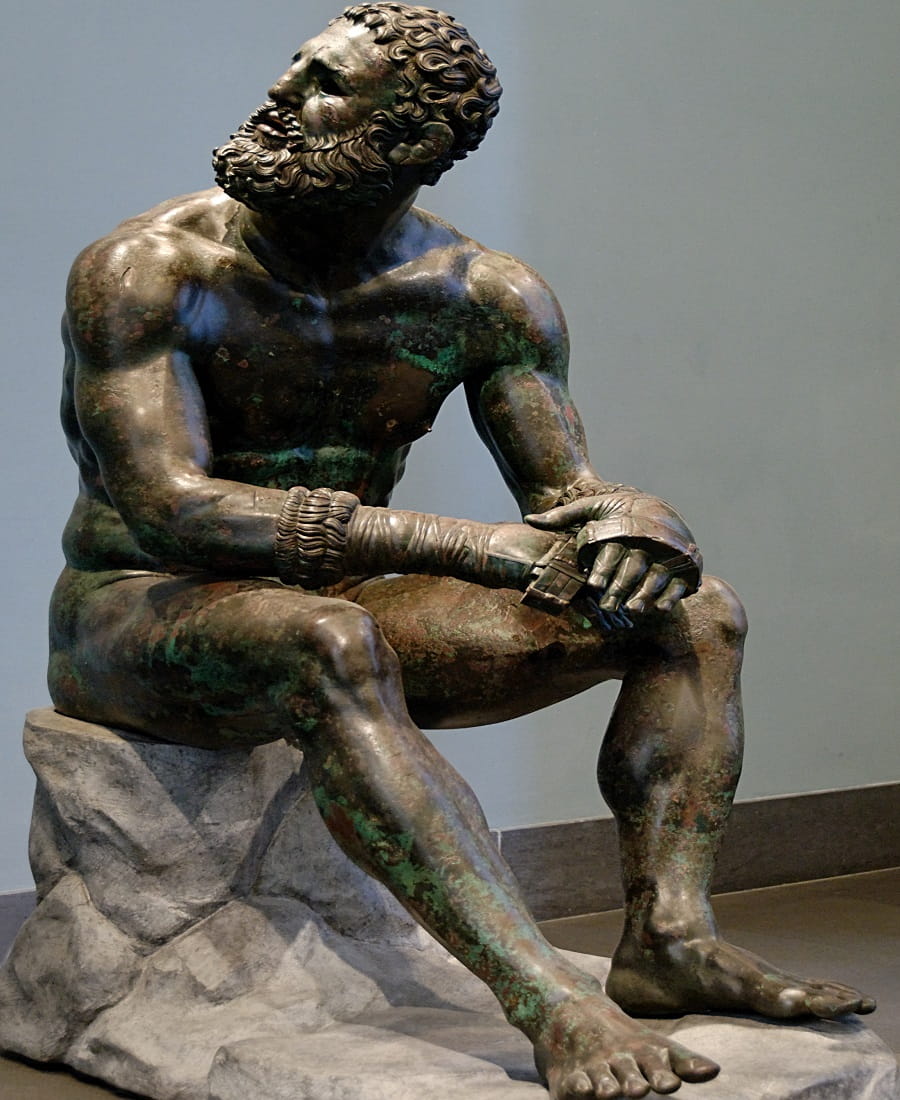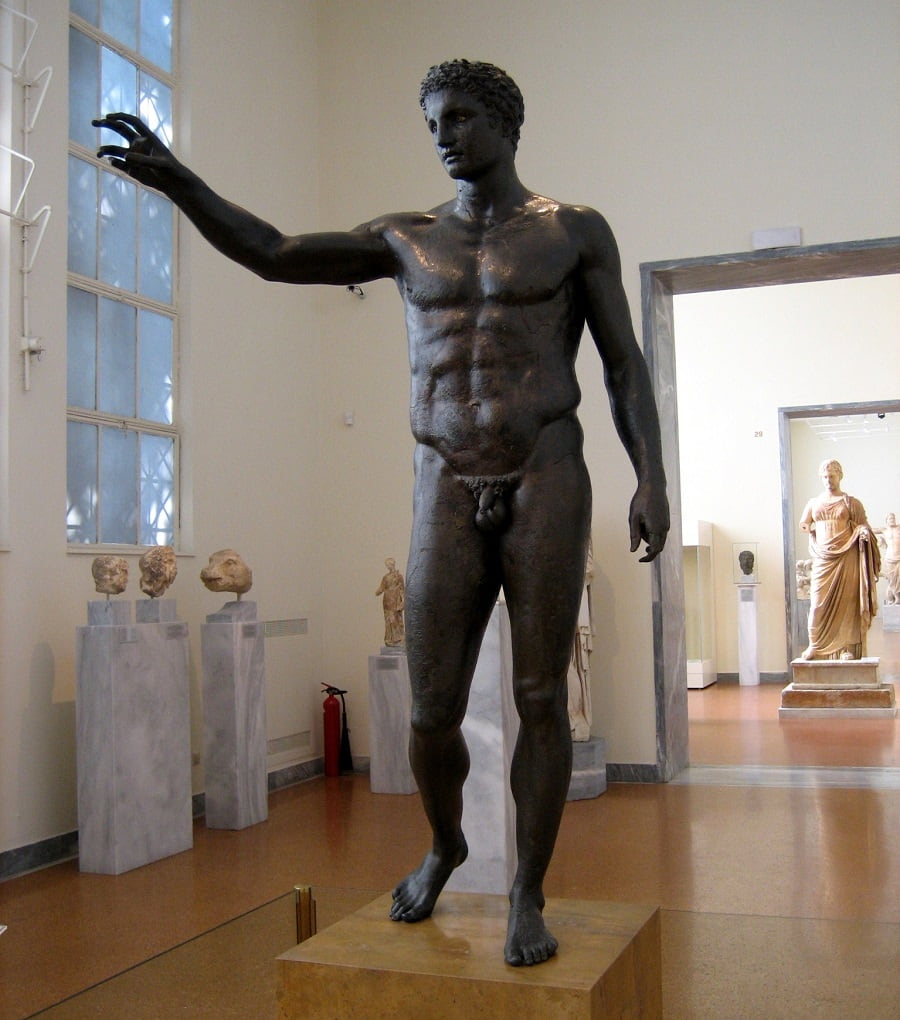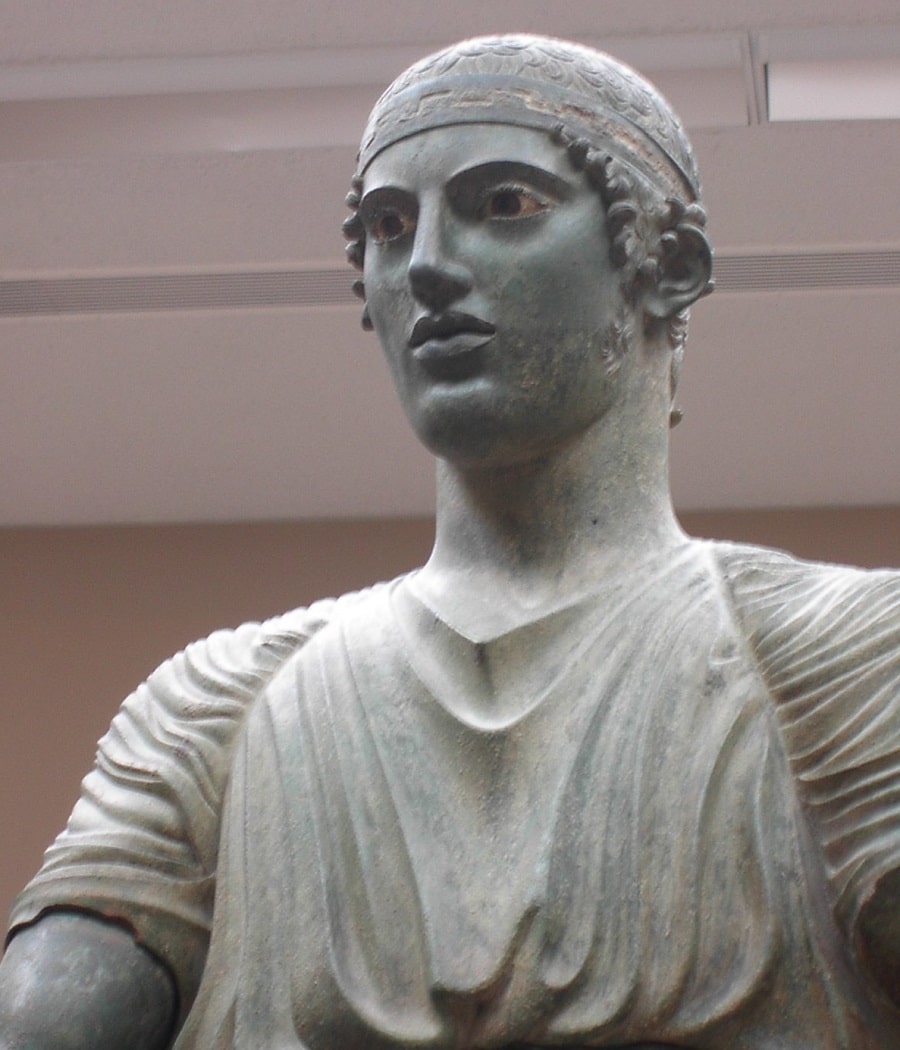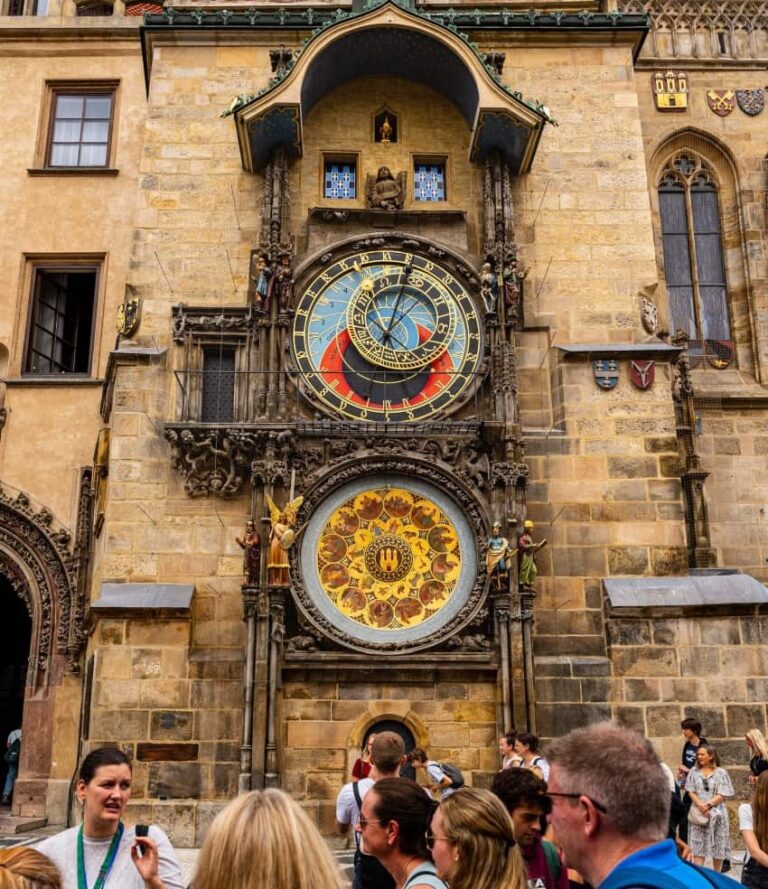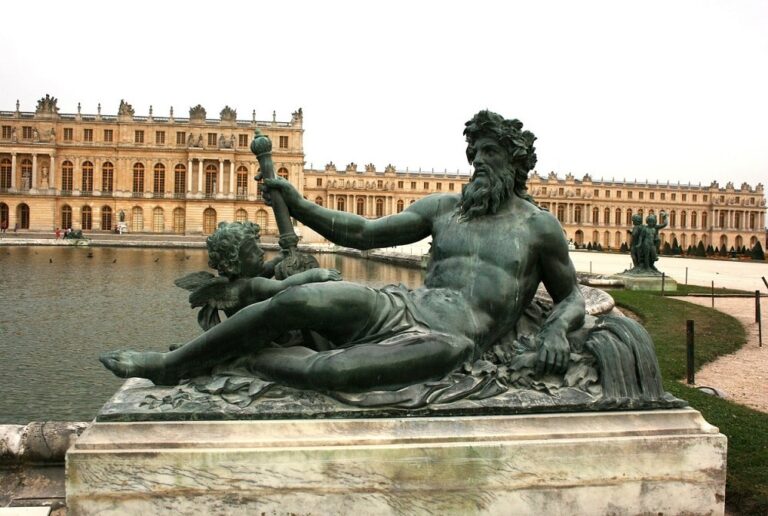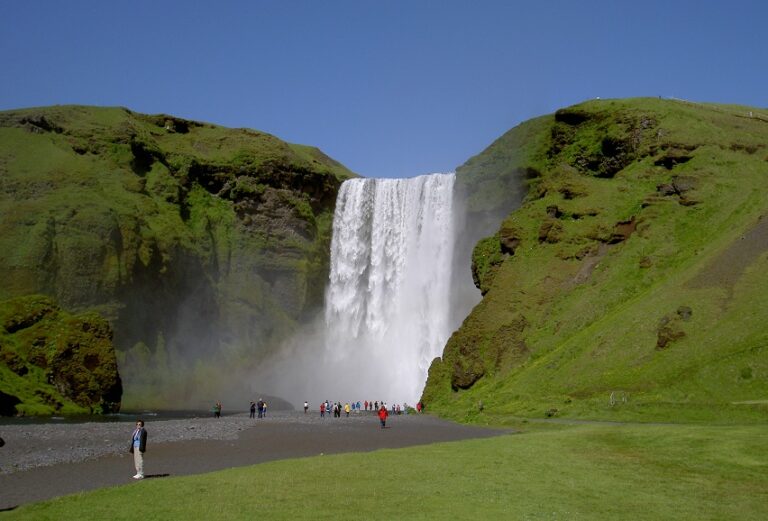15 Most Famous Greek Statues
Last Updated on 4th December 2023 by admin
Greek statues are most famous for their exceptional craftsmanship, realistic representations, and significant impact on the world of art. These captivating statues have withstood the test of time, captivating audiences with their beauty and cultural significance. In this article, we delve into the realm of ancient Greek art to explore the 15 most famous Greek statues, examining their historical context, artistic styles, and enduring legacy.
Greek statues have long been admired for their remarkable attention to detail, expressive features, and elegant postures. Let’s discover the stories behind these magnificent works of art:
1) Venus de Milo (Aphrodite of Milos)
The Venus de Milo statue, also known as Aphrodite of Milos, is an iconic masterpiece that has captivated art enthusiasts and historians for centuries. Created around 100 BCE, this marble sculpture depicts the Greek goddess of love and beauty, Aphrodite. The goddess is shown in the statue in an elegant, slightly bent position, without her arms. It is approximately six feet, eight inches tall and this ancient masterpiece is one of the most famous Greek statues.
The Venus de Milo represents the Hellenistic artistic style, characterized by intricate details and a sense of movement. The sculpture’s flowing drapery and delicate facial features capture the essence of Aphrodite’s divine beauty. Despite the missing arms, the statue’s enigmatic charm has only grown, leaving room for speculation about the original attributes she held, such as a mirror or an apple.
Discovered in 1820 on the island of Milos, the Venus de Milo quickly gained international acclaim. It was acquired by world’s Largest Museum, the Louvre in Paris, where it has remained a celebrated exhibit. The statue’s enduring influence is evident in its cultural significance and continued fascination among visitors from around the world.
The Venus de Milo stands as a testament to the timeless beauty and artistic mastery of ancient Greek statues. Its allure lies not only in its physical form but also in the emotional resonance it evokes, making it an enduring symbol of love, beauty, and the power of art to transcend time and captivate generations.
2) Discobolus (Discus Thrower)
The Discobolus, also known as the Discus Thrower, it is a ancient and one of the most famous Greek statues that embodies the athletic prowess and grace of the human form. Created by the famous artist Myron during the 5th century BCE, this masterpiece captures a pivotal moment in an athlete’s motion as they prepare to release the discus.
The Discobolus showcases the idealized athletic physique, with meticulously sculpted muscles and sinews that convey a sense of power and movement. The poised stance of the athlete, with one leg stretched backward and the other supporting the body’s weight, exudes a sense of controlled energy and concentration. This dynamic composition captivates viewers, as they witness the frozen moment of focused intensity.
Though the original bronze sculpture is lost, several marble copies and Roman replicas have survived, allowing us to appreciate the sculptor’s mastery. The Discobolus continues to inspire awe and admiration for its artistic merit and timeless depiction of human athleticism.
Today, the Discobolus serves as a symbol of human achievement and beauty, transcending time and inspiring generations. Its influence can be seen in various fields, from sports to art, where the pursuit of perfection and the celebration of the human form are valued.
3) Winged Victory of Samothrace
The Winged Victory of Samothrace, also known as the Nike of Samothrace is one of the famous Greek statues, even most famous statues in the world. It is a magnificent Hellenistic sculpture that stands as a testament to the artistic achievements of ancient Greece. Created in the 2nd century BCE, this masterpiece depicts Nike, the Greek goddess of victory, in a dynamic and awe-inspiring composition.
Perched atop a grand staircase in the Louvre Museum, the Winged Victory of Samothrace is a captivating sight to behold. The sculpture portrays Nike standing on the prow of a ship, her wings outstretched as if she has just landed. The intricate drapery that clings to her body and the windblown garments evoke a sense of movement and reveal the mastery of the sculptor in capturing the illusion of flowing fabric.
The Winged Victory of Samothrace is hailed for its remarkable attention to detail and the delicate rendering of the goddess’s wings. The feathers appear to be caught in a gentle breeze, adding to the sense of dynamic motion. Despite the statue’s fragmented state, with the head and arms missing, the sculpture’s grandeur and majesty remain intact, captivating viewers with its ethereal beauty.
This one of the famous Greek statues is not only a celebration of artistic skill but also a symbol of triumph and victory. Nike, with her commanding presence and triumphant pose, embodies the spirit of victory, becoming an embodiment of the ideals and aspirations of the ancient Greek civilization.
4) Statue of Zeus at Olympia
The Statue of Zeus at Olympia was a colossal masterpiece that stood as one of the Seven Wonders of the Ancient World. Crafted by the famous sculptor Phidias, this awe-inspiring statue portrayed Zeus, the king of the gods, seated on a grand throne.
The Statue of Zeus at Olympia was a testament to the artistic prowess and skill of ancient Greek sculptors. It stood approximately 40 feet in height and was adorned with gold, ivory, and precious stones. The craftsmanship and attention to detail were unparalleled, with intricate carvings and ornate designs adorning the throne and the god’s garments.
Housed in the Temple of Zeus in Olympia, Greece, the statue was a sacred and revered symbol of religious and cultural significance. Its purpose was to honor and celebrate Zeus, embodying his power, majesty, and divine authority.
Sadly, both the statue and the temple no longer exist, as they were destroyed by fire and earthquakes in antiquity. However, the ancient descriptions, depictions, and accounts of the statue’s grandeur have allowed us to imagine its splendor and appreciate its influence on subsequent generations of artists.
The Statue of Zeus at Olympia stands as a testament to the grandeur and artistic achievements of ancient Greece. It serves as a reminder of the heights that ancient Greek art and sculpture reached, leaving a lasting legacy that continues to inspire awe and admiration today.
5) Laocoön and His Sons
The Laocoön and His Sons sculpture is an awe-inspiring masterpiece and one of the most famous Greek statues. the statue embodies the emotional intensity and dramatic storytelling of ancient Greek art. Created during the Hellenistic period, this marble sculpture depicts the tragic scene from Greek mythology where Laocoön, a Trojan priest, and his two sons are entwined and tormented by sea serpents.
The sculpture captivates viewers with its incredible attention to detail and the vivid portrayal of pain, anguish, and despair. The contorted bodies of Laocoön and his sons, writhing in the grip of the serpents, convey a sense of agony and desperation. The artist’s mastery in capturing the human form in such an emotionally charged state is truly remarkable.
The Laocoön and His Sons sculpture is housed in the Vatican Museums and continues to be a prominent exhibit, drawing visitors from around the world. Its impact lies not only in its artistic merit but also in its cultural significance. The sculpture represents the struggle between mortals and the divine forces that often shaped the lives of ancient Greeks.
This masterpiece serves as a poignant reminder of the human condition and the fragility of existence. It explores themes of suffering, sacrifice, and the inexorable power of fate. The Laocoön and His Sons sculpture is proof of the enduring ability of art to elicit strong feelings and narratives, captivating spectators with its tragic story for centuries to come.
6) Aphrodite of Knidos
The Aphrodite of Knidos, sculpted by Praxiteles during the 4th century BCE, marked a pivotal moment in the portrayal of female nudity in ancient Greek art. This captivating marble sculpture showcases the goddess Aphrodite, the embodiment of love and beauty, in a modest yet sensuous pose.
The Aphrodite of Knidos was the first life-sized representation of a nude female form in Greek sculpture. Praxiteles boldly depicted Aphrodite as she prepares to bathe, covering her modesty with her hands while revealing her alluring beauty. The statue challenges traditional artistic conventions of the time, showcasing a level of naturalism and sensual elegance that was groundbreaking in ancient Greek art.
The sculpture’s craftsmanship is exquisite, with the artist paying careful attention to details such as the delicate curves of Aphrodite’s body, the flow of her drapery, and the graceful pose that suggests movement. The statue’s subtle smile and serene expression further enhance its allure and evoke a sense of divine beauty.
The Aphrodite of Knidos has had a profound influence on the portrayal of female beauty in art throughout history. It symbolizes the celebration of the female form and its connection to the ideals of love and beauty. Its timeless beauty continues to captivate audiences, inspiring awe and admiration for the exquisite representation of female beauty and the enduring legacy of ancient Greek art.
7) Riace Warriors
The Riace Warriors, a pair of Greek bronze statues discovered in 1972 off the coast of Riace in Italy, are a testament to the extraordinary craftsmanship and artistic skill of ancient Greek sculptors. Dating back to the 5th century BCE, these magnificent sculptures depict two muscular warriors, known as the Riace Bronzes, with intricate details that capture the essence of human strength and valor.
The statues showcase the mastery of anatomy and the use of bronze as a medium for sculpting. The Riace Warriors stand tall and proud, with their finely chiseled features and anatomically accurate musculature. The careful attention to detail, such as the facial expressions, the texture of the hair, and the intricately designed armor, brings these sculptures to life.
What makes the Riace Warriors truly remarkable is the advanced casting techniques employed by ancient Greek sculptors. The bronze used for the statues was carefully cast in separate parts and then assembled, demonstrating the sculptors’ technical prowess and artistic vision. The statues’ naturalistic poses and dynamic postures convey a sense of movement and realism, showcasing the sculptors’ ability to capture fleeting moments in time.
The discovery of the Riace Warriors has shed new light on the artistry of ancient Greece and its influence on subsequent generations. These sculptures have become iconic representations of ancient Greek bronze sculpture, capturing the imagination of art enthusiasts and scholars alike.
8) Hermes and the Infant Dionysus
The statue of Hermes and the Infant Dionysus , also known as the Hermes of Praxiteles is a mesmerizing marble sculpture that showcases the artistry and emotional depth of ancient Greek sculpture. Created by Praxiteles during the 4th century BCE, this masterpiece portrays the god Hermes holding the young Dionysus in his arms.
The sculpture exemplifies the skill and attention to detail of Praxiteles, which making it one of the most famous Greek statues. The fluidity of the drapery, the tender embrace of Hermes, and the serene expression on both figures’ faces create a profound sense of emotional connection. The delicately carved features, such as the soft curves and flowing hair, imbue the sculpture with a sense of grace and beauty.
Though the original statue has been lost, Roman copies and replicas preserve its exquisite artistry. The Hermes and the Infant Dionysus statue is a testament to Praxiteles’ ability to capture the human form with unparalleled realism and sensitivity.
The sculpture’s subject matter, depicting the god Hermes and the young Dionysus, represents a significant mythological narrative. Hermes, the messenger of the gods, cradles Dionysus, the god of wine and ecstasy, in a tender embrace. This portrayal symbolizes the divine bond and the interplay between different aspects of human existence.
9) Artemision Bronze
The Artemision Bronze, also known as the God from the Sea, is a captivating ancient Greek bronze statue that dates back to the 5th century BCE. This magnificent sculpture, discovered in the sea off Cape Artemision in Greece, showcases the advanced bronze casting techniques of ancient Greek sculptors and their ability to capture the human form in exquisite detail.
Although the statue’s precise identification is still up for question, it is said to either depict Zeus, the king of the gods, or Poseidon, the deity of the sea. The powerful and commanding presence of the figure, with its muscular physique and dynamic pose, conveys a sense of strength and divinity.
The Artemision Bronze stands approximately six feet and ten inches tall and exemplifies the exceptional skill of ancient Greek sculptors in working with bronze. The fine craftsmanship is evident in the intricate details of the facial features, the flowing locks of hair, and the carefully rendered musculature. The statue’s lifelike qualities and naturalistic representation set it apart as a remarkable example of ancient Greek sculpture.
The discovery of the Artemision Bronze sheds light on the artistic achievements of ancient Greece and their profound influence on subsequent cultures. This majestic sculpture continues to captivate audiences, serving as a testament to the enduring legacy and artistic prowess of ancient Greek sculptors.
10) Dying Gaul
The Dying Gaul, also known as the Galatian Suicide, is a powerful Hellenistic sculpture that portrays a wounded Gaul warrior in his final moments. This one of the famous Greek sculptures was created during the 3rd century BCE, the statue captures the intense emotions of pain, defeat, and bravery.
The sculpture depicts a Gaul warrior lying on the ground, his body twisted in anguish and his expression tormented. The intricate details, such as the contorted pose, the meticulously rendered facial features, and the meticulous rendering of the warrior’s weaponry and attire, contribute to the emotional intensity of the piece.
The Dying Gaul stands as a poignant representation of human suffering and the high price paid in the face of war. It serves as a tribute to the Gauls, a Celtic people who valiantly resisted the invading forces of the Roman Empire. The statue’s portrayal of the warrior’s sacrifice and indomitable spirit resonates with viewers, evoking empathy and admiration.
This masterpiece showcases the exceptional skill and artistry of ancient Greek sculptors. The ability to convey raw emotion through stone is a testament to their mastery. The Dying Gaul continues to be celebrated as a powerful symbol of heroism and resilience, reminding us of the timeless themes of sacrifice and the fragility of human existence.
11) Athena Parthenos
The Athena Parthenos statue, created by the famous sculptor Phidias, is an awe-inspiring representation of the Greek goddess Athena. This colossal chryselephantine (gold and ivory) statue once adorned the Parthenon, the iconic temple atop the Acropolis of Athens.
The original works of art was made up of gold and ivory, it is a one of the Greek’s tallest statues, standing over 38 feet tall, the Athena Parthenos statue was a marvel of ancient Greek sculpture. It depicted Athena, the goddess of wisdom, courage, and strategic warfare, with exquisite detail and grandeur. The statue portrayed Athena fully armed, holding a spear in one hand and a shield in the other.
The craftsmanship of the Athena Parthenos statue was unparalleled. The use of gold and ivory in its construction added a luxurious touch, while intricate carvings and delicate drapery emphasized the goddess’s divine presence. The statue’s face radiated serenity and wisdom, captivating all who beheld it.
Beyond its artistic merit, the Athena Parthenos statue held great cultural significance. It served as a symbol of Athena’s protection over Athens and as a testament to the city’s devotion to wisdom and knowledge. The statue’s placement within the Parthenon, a temple dedicated to Athena, reinforced the city’s commitment to its patron goddess.
12) Apollo Belvedere
The Apollo Belvedere is one of the famous Greek marble sculpture that depicts the Greek god Apollo. Created during the 2nd century CE, this masterpiece exemplifies the idealized beauty and poise of ancient Greek art.
The Apollo Belvedere stands as a testament to the timeless allure of classical sculpture. The statue portrays Apollo in a dynamic pose, with his arm raised, as if he were about to unleash his divine powers. Every detail of the sculpture exudes grace and harmony, from the flowing locks of his hair to the sinewy musculature of his body.
The Apollo Belvedere captures the essence of youthful beauty and embodies the ideals of ancient Greek aesthetics. The god’s perfectly proportioned physique, serene expression, and idealized features have inspired artists and art enthusiasts for centuries.
This magnificent sculpture takes its name from the Belvedere Courtyard in the Vatican Museums, where it is housed. Its influence has spread far and wide, shaping artistic depictions of Apollo and leaving a lasting impact on subsequent generations of artists.
The Apollo Belvedere is not only a masterpiece of ancient Greek art but also a symbol of divine perfection and artistic excellence. Its timeless beauty continues to captivate audiences, inviting us to appreciate the harmonious blend of physical beauty and spiritual power that defined ancient Greek sculpture.
13) The Boxer of Quirinal
The Boxer of Quirinal, also known as the Terme Boxer, is an extraordinary Hellenistic bronze statue that offers a glimpse into the world of ancient Greek sports and the physical and emotional toll it took on athletes. This captivating sculpture, dating back to the 1st century BCE, portrays a weary and battered boxer, revealing the grit, determination, and vulnerability of these revered competitors.
The statue showcases the boxer’s battered physique, with his muscular form visibly marked by wounds and bruises. His expression conveys a sense of exhaustion, pain, and stoic resolve. The sculptor’s attention to detail, capturing the boxer’s facial features, the texture of his skin, and the precision of his boxing gloves, adds a remarkable level of realism and emotional depth to the piece.
The Boxer of Quirinal symbolizes the hardships and sacrifices endured by athletes in ancient Greece. It serves as a tribute to their dedication, endurance, and unwavering spirit. This statue offers a rare glimpse into the physicality and emotional intensity of ancient Greek athletic competitions, providing valuable insight into the values and ideals that shaped ancient Greek society.
Today, this beautiful Boxer of Quirinal statue is one of the most famous Greek statues that captivating presence continues to captivate viewers, inspiring admiration for the indomitable spirit of athletes throughout history.
14) Antikythera Ephebe
The Antikythera Ephebe is a captivating bronze statue that offers a glimpse into the artistic and technological achievements of ancient Greece. Discovered in a shipwreck off the coast of Antikythera, Greece, this famous Greek statue is believed to date back to the 1st century BCE.
The Antikythera Ephebe depicts a young man in a contrapposto pose, with one leg bearing the weight of his body while the other is relaxed. The statue’s intricate details, from the carefully rendered musculature to the delicate facial features, reveal the exceptional skill of the ancient Greek bronze sculptors.
What sets the Antikythera Ephebe apart is its enigmatic presence. While the identity of the figure remains uncertain, some theories suggest that it may represent a god, a hero, or even a victorious athlete. The mystery surrounding the statue adds to its allure and invites speculation and interpretation.
Beyond its artistic beauty, the Antikythera Ephebe is also significant for its historical and scientific value. The Antikythera shipwreck, where the statue was found, yielded a wealth of artifacts and the renowned Antikythera Mechanism—an ancient analog computer. This remarkable discovery shed light on the technological sophistication of the ancient Greeks.
15) The Charioteer of Delphi
The Charioteer of Delphi is an extraordinary bronze statue that stands as a testament to the triumph and glory of ancient Greek chariot racing. Dating back to the 5th century BCE, this captivating sculpture captures a victorious charioteer in a moment of intense concentration and emotion.
The Charioteer of Delphi is a remarkable example of the classical Greek sculptural style. The statue stands tall at nearly life-size and showcases the mastery of the human form, with intricate details that bring the figure to life. The charioteer’s eyes, slightly downturned and focused, convey a sense of unwavering determination and focus.
The statue’s carefully carved features, from the delicate facial expression to the meticulously rendered garments, exemplify the craftsmanship of ancient Greek sculptors. The drapery of the charioteer’s robes, with its elegant folds and flowing movement, adds a sense of dynamism to the sculpture.
The Charioteer of Delphi serves as a reminder of the grandeur and significance of chariot racing in ancient Greek culture. As a symbol of victory and honor, it celebrates the athleticism, skill, and fierce competition that characterized these races. The statue’s refined beauty and the captivating aura it exudes continue to inspire admiration for the accomplishments of the ancient Greeks.
In conclusion, the 15 famous Greek statues mentioned in this article showcase the extraordinary artistic achievements of ancient Greece. Each sculpture encapsulates a unique aspect of Greek mythology, history, and cultural significance, leaving a lasting impact on the world of art. From the serene beauty of Aphrodite of Knidos to the dynamic athleticism of Discobolus, these statues highlight the range and diversity of artistic expression in ancient Greece.
Through their beauty, craftsmanship, and storytelling ability, these famous Greek statues continue to captivate audiences, standing as milestones in the history of art and reminding us of the indelible mark left by ancient Greece on the artistic and cultural landscape of the world.

